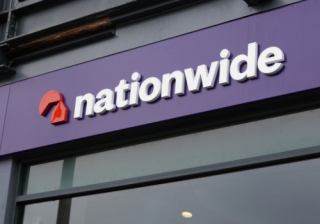Seeing the chickens come home to roost in the PRS
Steve Cox, chief commercial officer at Fleet Mortgages, discusses the ongoing problem of supply in the PRS and why the outlook for any significant change in the future looks increasingly unlikely.

"Some believe rent freezes are the answer but this is tackling the issue from the wrong end."
So, here we are in 2023, which already looks more in keeping with the early part of last year, than it did through those turbulent Autumn months.
Certainly when it comes to the buy-to-let market we are continuing to inch back towards a pre-Mini Budget ‘normalcy’, albeit with pricing still (on average) high compared to recent historical norms, and with lenders who are reliant on the capital markets constrained by swap rates in terms of the pricing they can offer.
Fleet is, of course, not in that position but we have to be cognisant of the market in terms of our pricing. We have however already been able to cut our fixed-rates this month, and we will continue to keep a close eye on what we’re able to do in the weeks ahead.
It is a new year, but seemingly when it comes to the PRS, we have the same problems, which is perhaps not surprising given how deep-seated they are. Or indeed, given how long we have been moving in this direction.
There are numerous problems of course, but the major one is an acute lack of supply which has been in the making for many years – due to a variety of Government measures – which are now seeing the chickens really come home to roost in this current environment.
The bad news – at least for tenants and indeed landlords who do want to bring more property to market – is that the outlook for any significant change in the future looks increasingly unlikely.
I saw a recent piece by Channel 4 news entitled, ‘Rent crisis: why is renting so bad in the UK’ which you can view here, and it’s clear that for many tenants, the system is broken.
The hoops that would-be tenants are having to jump through are pretty eye-watering, and the problems they face all lead back to dwindling supply and the decisions which ultimately led us down this route.
However, the piece didn’t sufficiently delve into why supply has fallen, and what needs to happen in order for supply to improve. It didn’t look at the way successive Governments have approached landlords and their role within the UK housing market, or indeed why they decided to target landlords in the way they did.
Landlord groups, quite rightly, continue to press the Government to reassess the true impact of their measures, specifically in terms of taxation and relief, because when added to increased mortgage and other costs, there’s no doubting the situation in keeping a property within the PRS for many landlords is simply not sustainable. Hence, why we have seen large numbers of amateur landlords selling up.
Some believe rent freezes are the answer but this is tackling the issue from the wrong end. Landlords will not bring new supply to market if they can’t charge a market rent, quite the opposite. If the ‘frozen rent’ doesn’t cover the costs and produce a profit, then what is the point of offering the property to the market at all?
And, interestingly, despite the rumour mill suggesting the Scottish Government would add a further six months to its freeze, it appears it u-turned at the last minute and instead looks like it is opting for a 3% rise allowable from April, with 6% allowable in exceptional cases.
While pulling back from a further freeze is a positive, I can’t help feeling the Scottish Government is making a rod for its own back by intervening again in the market. It’s not just a convoluted way of doing so, but what are the chances now that the vast majority of landlords will feel they have to increase rents by 3%?
As previously, mentioned, if you determine when and by how much landlords can increase rents, don’t be surprised if they then go and do this? In other circumstances, where the market decides, they may not have increased at all.
I’m absolutely still certain that tenants will see even bigger jumps at the end of this further rental price cap Scotland, than they would have done if it had not been in place. Particularly from landlords who will have refinanced this year, and will need to recoup the extra costs from increased rent. It remains a short-term ‘sticking plaster’ that will ultimately end up infecting the wound.
Of course, I recognise that supply is problematic across the housing piece, and that giving back landlords tax relief, cutting stamp duty back to homeowner levels, and essentially resetting the market back to what it was, is unlikely to prove popular with everyone. But if we want to find a way out of this situation, and stem the flow of property out of the PRS then something needs to happen.
We still have many positives for landlords – not least the ability to tap into that tenant demand, strong rental yields, a good flow of lending from lenders like ourselves – all of which will still be taken advantage of, but perhaps not in the numbers we could see, or we need to see. In that sense, the sooner there is action, the better.
Breaking news
Direct to your inbox:
More
stories
you'll love:
This week's biggest stories:
FCA
Firms required to report complaints involving vulnerable customers under simplified FCA rules

Santander
Santander joins mortgage price war with new rates from 3.51%

FCA
FCA sets out timeline for mortgage rule changes

Inflation
Bank of England set to cut rates as inflation falls to eight-month low

This week's biggest stories:
FCA
Firms required to report complaints involving vulnerable customers under simplified FCA rules

Santander
Santander joins mortgage price war with new rates from 3.51%

FCA
FCA sets out timeline for mortgage rule changes

Inflation
Bank of England set to cut rates as inflation falls to eight-month low

Nationwide
FCA fines Nationwide £44m for inadequate financial crime controls

FCA
FCA announces new measures to support growth of mutuals sector
